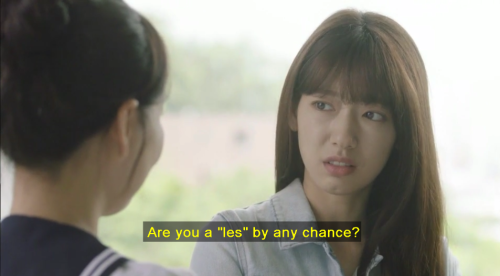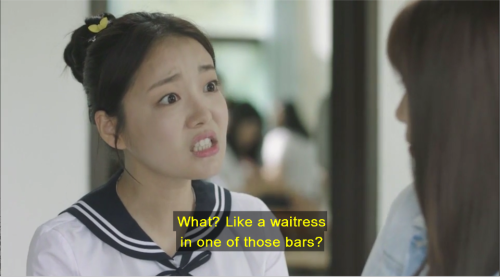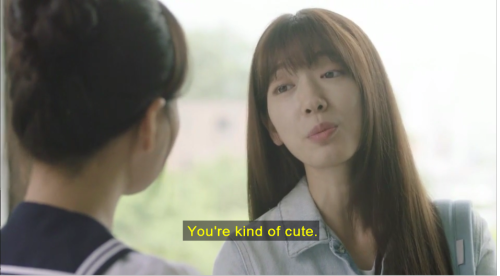You’re Teleported To 44 BCE Rome In Your Everyday Street Clothes. You’re Brought Before Caesar And
You’re teleported to 44 BCE Rome in your everyday street clothes. You’re brought before Caesar and he believes you might be from the future, hoping to bring him fortune. One day he questions you, asking “How Do I Die?”
More Posts from Ourvioletdeath and Others

Matteo Farinella.
Rage
Creative title, right? Probably not to be honest, it sounds like something a hipster would post, or an emotional teenage girl(not being sexist, just providing a cliché example). Nonetheless, I feel rather compelled to put that as the title, mainly because it’s something that I feel pretty often. Not necessarily the anger, but the violent aspect of rage, that nearly uncontrollable violence that builds up inside you, is something that I feel virtually every day. Goodness, I sound so whiny, but I feel like I have to express it somehow or else it’s going to eat away at my emotional health.
I recognize that violence isn’t the answer, but it’s infuriating to be unable to do anything other than think about what you would do to someone who truly deserves to suffer. Of course it sounds rather sociopathic, but there are people to truly need to get whats coming to them from time to time.
It’s hard to describe the feeling I get... it’s a mixture of frustration with anxiety, which produces helplessness and then finally creates the violent urge to hurt someone. I have never done anything under the influence of this urge except for once, which I would rather not get into as I was luckily stopped before things got too far. I learned to control the rage, but the build up of it makes it harder and harder to control. I realized that working out often helps reduce the buildup, but what happens when you don’t have time to work out and you are constantly placed under a lot of stress? Well, you have several options; blow up, take it out on someone, or take a break.
Of course, the most socially acceptable answer is to take a break, which would usually require going out for some fresh air, but in more extreme circumstances it could mean take a day or two off from work or school, and that SUCKS. Taking a day off will just add to your workload afterwards, since you’ll have to make up for the time you lost the last day. Conversely, what would happen if you let your rage out? Well, if you let it out on someone else, you could hurt them, both mentally and physically. And just blowing up could get you kicked out of your workplace, and maybe even sent to jail if things get physical.
So what is there to do? This is a problem that I find myself to be facing rather often, and it always feels like a lose-lose situation. Maybe by talking about it things could get better, but who really wants to hear someone bitch about their life? I personally would find that to be extremely boring, and it might not even work! The way I found to be a good reliever is just to write it out, but its taken me several days to put this all into something concise, a so what happens to those people who don’t have the time? I guess they turn to drugs? I’m not really sure to be honest.
Maybe my point got lost while I was blabbering about this whole thing, but what I meant to emphasize was that stress, rage and anger can easily build up in people, and sometimes there really is just no way to relieve it, which is extremely frustrating to me.
Goodness, I wrote way too much... Oh well, it helped me vent, which I guess was the purpose of this. If anyone ever actually reads this, I hope you’ve enjoyed my rather long rant on rage and anger, and I hope it was somehow beneficial to you, in whatever way that may be.
The Grim Reaper is no longer able to claim lives directly. Instead, when your time is up a mark appears on your body and it is the duty of every other person to kill you on sight.
You discover that you have the ability to let other people experience your nostalgia. You find that your friend needs some comfort after a rather terrible day. You take a deep breath, put your hand on their shoulder, and let the memories begin.

Is an immunization for stress on the horizon?
Can probiotics fend off mood disorders?
It’s too early to say with scientific certainty, but a new study by CU Boulder researchers suggests that one particular beneficial bacteria can have long-lasting anti-inflammatory effects on the brain, making it more resilient to the physical and behavioral effects of stress.
The findings, if replicated in clinical trials could ultimately lead to new probiotic-based immunizations to protect against posttraumatic stress disorder (PTSD) and anxiety or new treatments for depression, the authors say.
“We found that in rodents this particular bacterium, Mycobacterium vaccae, actually shifts the environment in the brain toward an anti-inflammatory state,” said lead author Matthew Frank, a senior research associate in the Department of Psychology and Neuroscience. “If you could do that in people, it could have broad implications for a number of neuroinflammatory diseases.”
Anxiety, PTSD and other stress-related mental disorders impact as many as one in four people in their lifetime. Mounting research suggests that stress-induced brain inflammation can boost risk of such disorders, in part by impacting mood-influencing neurotransmitters like norepinephrine or dopamine.
“There is a robust literature that shows if you induce an inflammatory immune response in people, they quickly show signs of depression and anxiety,” said Frank. “Just think about how you feel when you get the flu.”
Research also suggests that trauma, illness or surgery can sensitize certain regions of the brain, setting up a hair-trigger inflammatory response to subsequent stressors which can lead to mood disorders and cognitive decline.
“We found that Mycobacterium vaccae blocked those sensitizing effects of stress too, creating a lasting stress-resilient phenotype in the brain,” Frank said.
A previous CU Boulder study, found that mice injected with a heat-killed preparation of M. vaccae and then placed with a larger aggressive male for 19 days exhibited less anxiety-like behavior and were less likely to suffer colitis or inflammation in their peripheral tissues. For the new study, published in the journal Brain, Behavior and Immunity, the researchers set out to determine what exactly M. vaccae does in the brain.
Male rats injected with the bacterium three times, one week apart, had significantly higher levels of the anti-inflammatory protein interleukin-4 in the hippocampus — a brain region responsible for modulating cognitive function, anxiety and fear — eight days after the final injection.
After exposure to a stressor, the immunized animals also showed lower levels of a stress-induced protein, or alarmin, called HMGB1, believed to play a role in sensitizing the brain to inflammation, and higher expression of CD200R1, a receptor key for keeping glial cells (the brain’s immune cells) in an anti-inflammatory state. As in the first study, the immunized rats exhibited less anxious behavior after being stressed.
Mood-modulating microbes
“If you look at the field of probiotics generally, they have been shown to have strong effects in the domains of cognitive function, anxiety and fear,” said senior author Christopher Lowry, an associate professor in integrative physiology. “This paper helps make sense of that by suggesting that these beneficial microbes, or signals derived from these microbes, somehow make their way to the hippocampus, inducing an anti-inflammatory state.”
M. vaccae was first discovered on the shores of Lake Kyoga in Uganda in the 1990s by immunologists who realized that people who lived in the area responded better to certain tuberculosis vaccines. They later realized that the bacterium found in the lakeshore soil had immune-modulating properties that were enhancing the vaccine’s efficacy. Researchers set out to study it in lung cancer patients and found that, while it did not prolong life, it somehow improved mood.
M. vaccae is not commercially available but is the subject of numerous ongoing studies.
Lowry, who has been studying it for 17 years, envisions a day when it or another beneficial bacteria could be administered to people at high risk of PTSD – such as soldiers preparing to be deployed or emergency room workers – to buffer the effects of stress on the brain and body. It could also possibly be used to prevent sepsis-induced cognitive impairment, he said.
Meanwhile, he is working with researchers at University of Colorado Denver on a study exploring whether veterans with PTSD can benefit from an oral probiotic consisting of a different bacterial strain, Lactobacillus reuteri.
“More research is necessary, but it’s possible that other strains of beneficial bacteria or probiotics may have a similar effect on the brain,” he said.

Isn’t it funny how on TV : 1) getting shot in the shoulder is always treated like it’s a minor flesh wound. It’s not like you’ve probably sustained serious or even permanent damage to your arm, or even gone through your lung…nope. 2) People are always dying of some vague infectious disease that’s only hinted at. I mean, it’s probably TB, but still, it’d be nice to get some closure. 3) People catching something after a walk in the rain and then dying. 4) Cardiac arrest is like, totally NBD. A couple of (really badly performed) pumps on the chest, and the victim is up and talking as if they didn’t just drop dead. Like, if you’ve really just arrested, you’ve probably got 5 broken ribs, an ET tube in your throat and you’ve just earned yourself a ticket to ITU.

Peering into neural networks
Neural networks, which learn to perform computational tasks by analyzing large sets of training data, are responsible for today’s best-performing artificial intelligence systems, from speech recognition systems, to automatic translators, to self-driving cars.
But neural nets are black boxes. Once they’ve been trained, even their designers rarely have any idea what they’re doing — what data elements they’re processing and how.
Two years ago, a team of computer-vision researchers from MIT’s Computer Science and Artificial Intelligence Laboratory (CSAIL) described a method for peering into the black box of a neural net trained to identify visual scenes. The method provided some interesting insights, but it required data to be sent to human reviewers recruited through Amazon’s Mechanical Turk crowdsourcing service.
At this year’s Computer Vision and Pattern Recognition conference, CSAIL researchers presented a fully automated version of the same system. Where the previous paper reported the analysis of one type of neural network trained to perform one task, the new paper reports the analysis of four types of neural networks trained to perform more than 20 tasks, including recognizing scenes and objects, colorizing grey images, and solving puzzles. Some of the new networks are so large that analyzing any one of them would have been cost-prohibitive under the old method.
The researchers also conducted several sets of experiments on their networks that not only shed light on the nature of several computer-vision and computational-photography algorithms, but could also provide some evidence about the organization of the human brain.
Neural networks are so called because they loosely resemble the human nervous system, with large numbers of fairly simple but densely connected information-processing “nodes.” Like neurons, a neural net’s nodes receive information signals from their neighbors and then either “fire” — emitting their own signals — or don’t. And as with neurons, the strength of a node’s firing response can vary.
In both the new paper and the earlier one, the MIT researchers doctored neural networks trained to perform computer vision tasks so that they disclosed the strength with which individual nodes fired in response to different input images. Then they selected the 10 input images that provoked the strongest response from each node.
In the earlier paper, the researchers sent the images to workers recruited through Mechanical Turk, who were asked to identify what the images had in common. In the new paper, they use a computer system instead.
“We catalogued 1,100 visual concepts — things like the color green, or a swirly texture, or wood material, or a human face, or a bicycle wheel, or a snowy mountaintop,” says David Bau, an MIT graduate student in electrical engineering and computer science and one of the paper’s two first authors. “We drew on several data sets that other people had developed, and merged them into a broadly and densely labeled data set of visual concepts. It’s got many, many labels, and for each label we know which pixels in which image correspond to that label.”
The paper’s other authors are Bolei Zhou, co-first author and fellow graduate student; Antonio Torralba, MIT professor of electrical engineering and computer science; Aude Oliva, CSAIL principal research scientist; and Aditya Khosla, who earned his PhD as a member of Torralba’s group and is now the chief technology officer of the medical-computing company PathAI.
The researchers also knew which pixels of which images corresponded to a given network node’s strongest responses. Today’s neural nets are organized into layers. Data are fed into the lowest layer, which processes them and passes them to the next layer, and so on. With visual data, the input images are broken into small chunks, and each chunk is fed to a separate input node.
For every strong response from a high-level node in one of their networks, the researchers could trace back the firing patterns that led to it, and thus identify the specific image pixels it was responding to. Because their system could frequently identify labels that corresponded to the precise pixel clusters that provoked a strong response from a given node, it could characterize the node’s behavior with great specificity.
The researchers organized the visual concepts in their database into a hierarchy. Each level of the hierarchy incorporates concepts from the level below, beginning with colors and working upward through textures, materials, parts, objects, and scenes. Typically, lower layers of a neural network would fire in response to simpler visual properties — such as colors and textures — and higher layers would fire in response to more complex properties.
But the hierarchy also allowed the researchers to quantify the emphasis that networks trained to perform different tasks placed on different visual properties. For instance, a network trained to colorize black-and-white images devoted a large majority of its nodes to recognizing textures. Another network, when trained to track objects across several frames of video, devoted a higher percentage of its nodes to scene recognition than it did when trained to recognize scenes; in that case, many of its nodes were in fact dedicated to object detection.
One of the researchers’ experiments could conceivably shed light on a vexed question in neuroscience. Research involving human subjects with electrodes implanted in their brains to control severe neurological disorders has seemed to suggest that individual neurons in the brain fire in response to specific visual stimuli. This hypothesis, originally called the grandmother-neuron hypothesis, is more familiar to a recent generation of neuroscientists as the Jennifer-Aniston-neuron hypothesis, after the discovery that several neurological patients had neurons that appeared to respond only to depictions of particular Hollywood celebrities.
Many neuroscientists dispute this interpretation. They argue that shifting constellations of neurons, rather than individual neurons, anchor sensory discriminations in the brain. Thus, the so-called Jennifer Aniston neuron is merely one of many neurons that collectively fire in response to images of Jennifer Aniston. And it’s probably part of many other constellations that fire in response to stimuli that haven’t been tested yet.
Because their new analytic technique is fully automated, the MIT researchers were able to test whether something similar takes place in a neural network trained to recognize visual scenes. In addition to identifying individual network nodes that were tuned to particular visual concepts, they also considered randomly selected combinations of nodes. Combinations of nodes, however, picked out far fewer visual concepts than individual nodes did — roughly 80 percent fewer.
“To my eye, this is suggesting that neural networks are actually trying to approximate getting a grandmother neuron,” Bau says. “They’re not trying to just smear the idea of grandmother all over the place. They’re trying to assign it to a neuron. It’s this interesting hint of this structure that most people don’t believe is that simple.”





napping bear. or, melodramatic thespian bear. photos by olav thokle in alaska’s lake clark national park











girl crush
-
 rat---king reblogged this · 1 month ago
rat---king reblogged this · 1 month ago -
 rockstar80s reblogged this · 1 month ago
rockstar80s reblogged this · 1 month ago -
 apenguinstuff liked this · 1 month ago
apenguinstuff liked this · 1 month ago -
 screamingtofillthevoid liked this · 2 months ago
screamingtofillthevoid liked this · 2 months ago -
 existentialcrisisetcetera reblogged this · 2 months ago
existentialcrisisetcetera reblogged this · 2 months ago -
 cherrytinttears liked this · 2 months ago
cherrytinttears liked this · 2 months ago -
 galedekarryingmassivetits reblogged this · 2 months ago
galedekarryingmassivetits reblogged this · 2 months ago -
 spaniel-in-distress liked this · 2 months ago
spaniel-in-distress liked this · 2 months ago -
 iloveraspberriessomuch reblogged this · 2 months ago
iloveraspberriessomuch reblogged this · 2 months ago -
 iloveraspberriessomuch liked this · 2 months ago
iloveraspberriessomuch liked this · 2 months ago -
 thebloggingfox reblogged this · 2 months ago
thebloggingfox reblogged this · 2 months ago -
 cornfields-and-bad-dreams reblogged this · 2 months ago
cornfields-and-bad-dreams reblogged this · 2 months ago -
 cornfields-and-bad-dreams liked this · 2 months ago
cornfields-and-bad-dreams liked this · 2 months ago -
 blrbaileys reblogged this · 2 months ago
blrbaileys reblogged this · 2 months ago -
 blrbaileys liked this · 2 months ago
blrbaileys liked this · 2 months ago -
 inkspills-and-waxseals reblogged this · 2 months ago
inkspills-and-waxseals reblogged this · 2 months ago -
 dumblydore73 reblogged this · 2 months ago
dumblydore73 reblogged this · 2 months ago -
 dumblydore73 liked this · 2 months ago
dumblydore73 liked this · 2 months ago -
 mists-of-hithlum liked this · 2 months ago
mists-of-hithlum liked this · 2 months ago -
 rosesmusicandaloeveraplants reblogged this · 2 months ago
rosesmusicandaloeveraplants reblogged this · 2 months ago -
 rosesmusicandaloeveraplants liked this · 2 months ago
rosesmusicandaloeveraplants liked this · 2 months ago -
 marshmarrows reblogged this · 2 months ago
marshmarrows reblogged this · 2 months ago -
 cool-loser reblogged this · 2 months ago
cool-loser reblogged this · 2 months ago -
 toosheeptheorist reblogged this · 2 months ago
toosheeptheorist reblogged this · 2 months ago -
 tedrakitty liked this · 2 months ago
tedrakitty liked this · 2 months ago -
 pikagatogirltits reblogged this · 2 months ago
pikagatogirltits reblogged this · 2 months ago -
 lesbianseaweed liked this · 2 months ago
lesbianseaweed liked this · 2 months ago -
 ladyargead reblogged this · 2 months ago
ladyargead reblogged this · 2 months ago -
 ladyargead liked this · 2 months ago
ladyargead liked this · 2 months ago -
 obsessioninc reblogged this · 2 months ago
obsessioninc reblogged this · 2 months ago -
 grumpyunicorn reblogged this · 2 months ago
grumpyunicorn reblogged this · 2 months ago -
 overrideeclipse reblogged this · 2 months ago
overrideeclipse reblogged this · 2 months ago -
 rubykaryatis reblogged this · 2 months ago
rubykaryatis reblogged this · 2 months ago -
 stormage-writes reblogged this · 2 months ago
stormage-writes reblogged this · 2 months ago -
 stormage-writer liked this · 2 months ago
stormage-writer liked this · 2 months ago -
 essence-of-foxfire-charm reblogged this · 2 months ago
essence-of-foxfire-charm reblogged this · 2 months ago -
 snowsisterskiss reblogged this · 2 months ago
snowsisterskiss reblogged this · 2 months ago -
 miniduckfest liked this · 2 months ago
miniduckfest liked this · 2 months ago -
 wheeljak liked this · 2 months ago
wheeljak liked this · 2 months ago -
 kamenridermonarch liked this · 2 months ago
kamenridermonarch liked this · 2 months ago -
 honeyrot-art liked this · 2 months ago
honeyrot-art liked this · 2 months ago -
 elderberry-cookbook reblogged this · 2 months ago
elderberry-cookbook reblogged this · 2 months ago -
 boneseses reblogged this · 2 months ago
boneseses reblogged this · 2 months ago -
 kiura-hinako reblogged this · 2 months ago
kiura-hinako reblogged this · 2 months ago -
 kiura-hinako liked this · 2 months ago
kiura-hinako liked this · 2 months ago -
 snowsisterskiss liked this · 2 months ago
snowsisterskiss liked this · 2 months ago -
 skadeskrieghund reblogged this · 2 months ago
skadeskrieghund reblogged this · 2 months ago -
 shadowroth reblogged this · 2 months ago
shadowroth reblogged this · 2 months ago -
 shadowroth liked this · 2 months ago
shadowroth liked this · 2 months ago